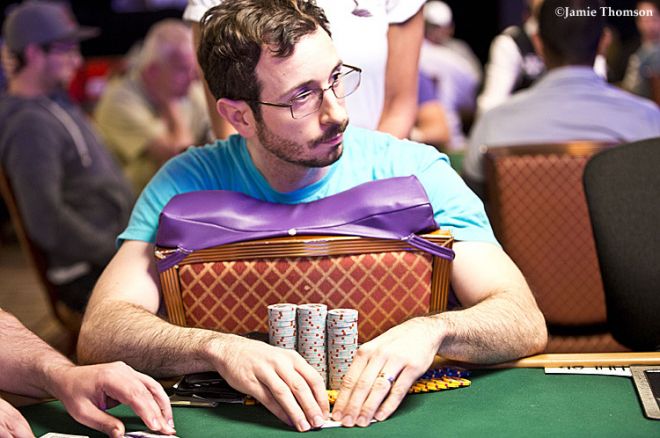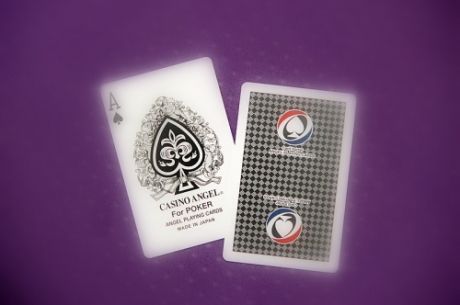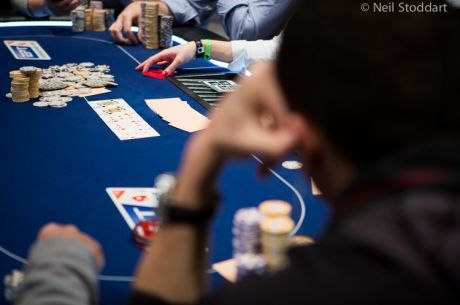More Brian Rast vs. Scott Seiver: Four-Flush Board Suits Rast

Covering live poker tournaments for a living affords me the opportunity to see countless thousands of hands played out, many of which offer interesting and potentially valuable insights into how players �� both amateurs and professionals �� play the game. In this ongoing series, I��ll highlight hands I��ve seen at the tournaments I��ve covered and see if we can glean anything useful from them.
The Scene
Last week, we looked over an interesting hand from the $500,000 Super High Roller Bowl in July, an event which drew 43 of the game��s best and wealthiest and for which the titanic buy-in created a suitably enormous first-place prize of $7,525,000. In that hand, Brian Rast took an unfortunate beat with pocket kings after inducing a four-bet shove from Scott Seiver who held eights and then hit his two-outer.
Shortly thereafter, Seiver and Rast found themselves heads up after the elimination of Connor Drinan in third. With second place paying $5,160,000, the pair were playing for a difference of $2.365 million in prize money. Seiver entered heads-up play with about a 2-to-1 chip lead, but the two soon played a big pot that also made the broadcast �� one that changed things dramatically.
The Action
They were still in Level 22 (60,000/120,000/20,000) and Seiver was up to around 15 million while Rast was sitting with about 6 million when the hand took place. It began with Seiver raising to 320,000 from the button. Rast fired back a three-bet to 860,000, and Seiver called, deciding to see the flop which fell 9?K?4?.
Rast led for 750,000, and Seiver called. A third spade fell when the 5? turned and Rast fired a second bullet of 1.4 million. Seiver again called, then the river brought yet another spade, the 3?.
This time, after thinking for about a minute, Rast checked. Seiver then reached for a stack of chips and announced he was all in, putting Rast at risk for a little more than half of the pot.
Rast double-checked his cards and confidently called it off, showing A?K? for a king-high flush. Seiver knuckled the table and mucked Q?J?, a second-best flush.
Concept and Analysis

Heads-up play usually involves both players being willing to go to battle with pretty wide ranges, so Seiver opens with a standard raise holding Q?J? �� a great hand heads up because it will flop so many strong pairs and draws.
Unfortunately for him, Rast wakes up with an even bigger hand and three-bets his A?K? to a little less than three times the opening raise. Seiver knows Rast could be three-betting wide and queen-jack flops well, so he calls in position.
The 9?K?4? flop brings a continuation bet from Rast, but Seiver calls because he still has plenty of equity against a lot of Rast��s hands. Plus, he has outs to the nuts regardless of what Rast holds.
On the turn Seiver picks up a flush draw and decides to call another barrel. Then when the four-flush hits on the river and Rast has less than a pot-sized bet left, things get really intriguing.
Rast is almost at the top of his range with a king-high flush and very few hands beat him. Despite this, he checks. Seiver now expects to have the best hand most of the time, having made an unlikely flush. Since Rast has so few chips left, he just puts Rast all in, only to have Rast snap it off with the best hand.
Four-flush boards can be some of the trickiest in poker to play. They represent great bluffing opportunities, especially in position. Many players would bet for value in Rast��s spot, but he decides to check-call it off. It ends up working out perfectly because Seiver does end up shoving, but it��s just a great play in general on Rast��s part.
Checking the river against an aggressive opponent on a four-flush board can provide value in two ways. For one thing, it encourages players to attempt to bluff you. They know that it��s very difficult to call without a flush since they can so easily have one. For another, they may value bet lower flushes, and this is especially true of good players who are willing to value bet thinner.
Empowered by this big double-up and his newfound chip lead, Rast finished Seiver off and won the Super High Roller Bowl, taking down the biggest score of his career.
Want to stay atop all the latest in the poker world? If so, make sure to get PokerNews updates on your social media outlets. Follow us on Twitter and find us on both Facebook and Google+!









